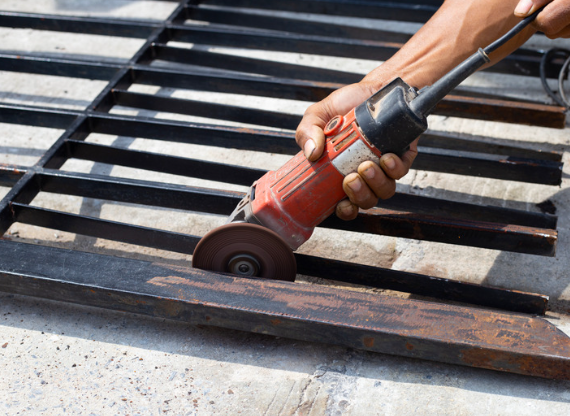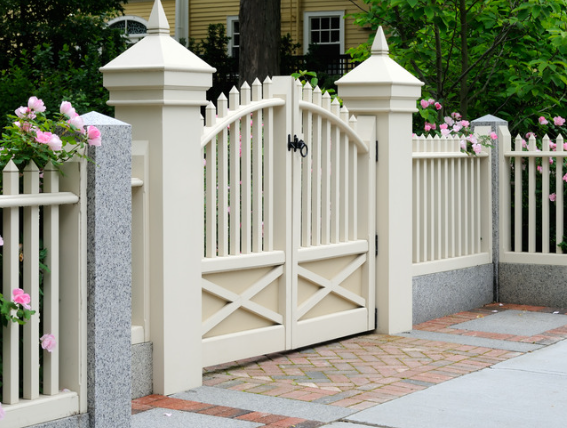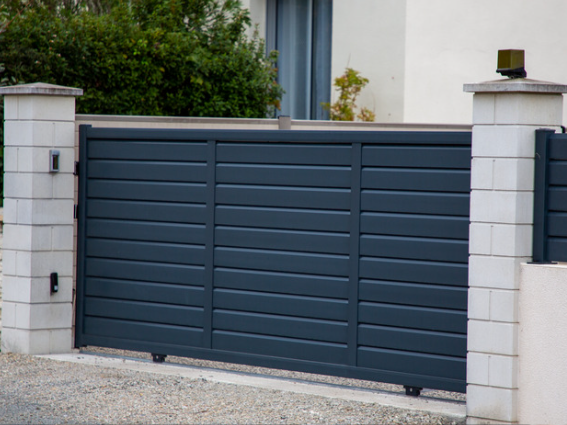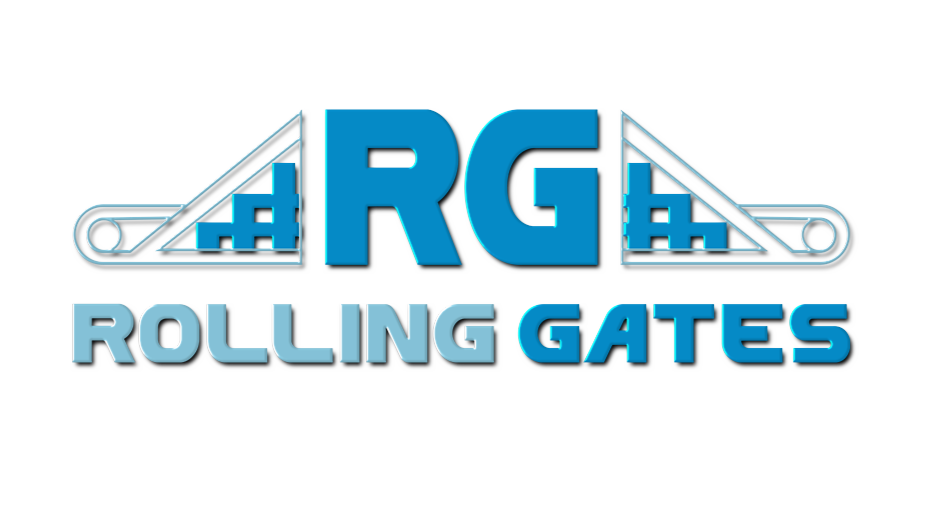Need expert iron gate repair in Walnut Creek, CA? Discover common gate issues and how to fix them like a pro. Get professional maintenance tips and specialist repair solutions for lasting durability.
Iron gates offer durability, security, and a touch of elegance to any property. However, like any other structure, they require regular maintenance and occasional repairs to keep them in top shape. Knowing how to diagnose and fix common gate problems can save you time and money, whether it’s due to rust, misalignment, or motor failure. Understanding the proper repair techniques will help you extend the lifespan of your iron gate while ensuring optimal functionality.
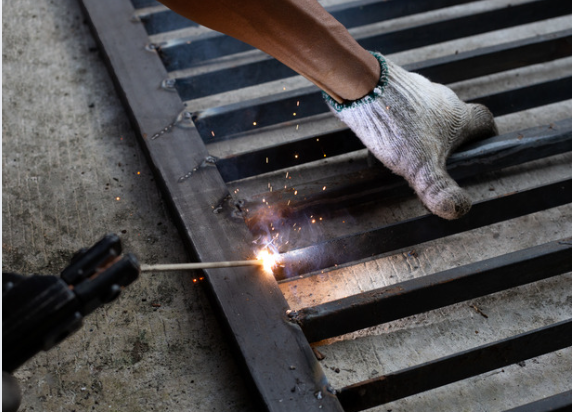
If you’re looking for expert guidance on iron gate repair in Walnut Creek, CA, this guide will walk you through common issues, their causes, and how to fix them efficiently. From rusty hinges to electrical malfunctions in automated gates, we cover all aspects of troubleshooting. Plus, if you need professional help, we’ll introduce you to a trusted service provider in the area who specializes in iron gate repair and maintenance.
Common Iron Gate Issues and How to Fix Them in Walnut Creek, CA
Iron gates add a touch of elegance and security to any property. However, like any other outdoor structure, they are susceptible to wear and tear over time. From rust and corrosion to misalignment and mechanical failures, several common issues can arise that require attention. If you’re experiencing any of these problems, it might be time to seek professional gate repair in Walnut Creek, CA, to ensure your gate remains functional and visually appealing. Below, we outline some of the most common iron gate problems and how to fix them.
1. Rust and Corrosion
Rust and corrosion are among the most common issues affecting iron gates, particularly in regions with high humidity, frequent rainfall, or constant exposure to harsh environmental conditions. When left untreated, rust can compromise the structural integrity of your gate, making it brittle, weak, and potentially unsafe. Over time, excessive corrosion may lead to costly repairs or even require a full gate replacement. Understanding the causes of rust and taking proactive measures can help extend the lifespan of your gate while maintaining its aesthetic appeal and functionality.
Causes of Rust
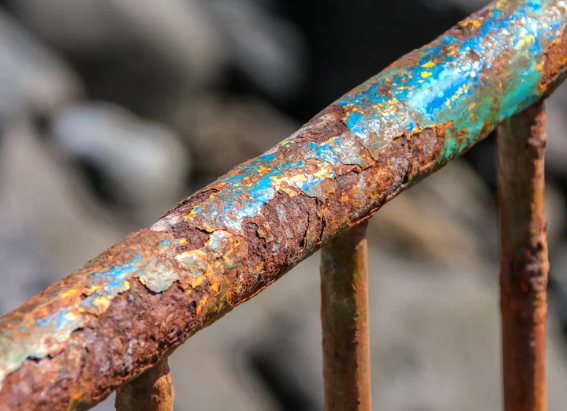
Rust forms when iron reacts with oxygen and moisture, creating iron oxide. This process is accelerated by several environmental and maintenance factors, including:
- Exposure to Moisture and Weather Conditions
Constant contact with rain, humidity, or even sprinkler systems can speed up rust formation. If water lingers on the surface without proper drainage, it increases the risk of corrosion. - Lack of Protective Coating
A missing or deteriorated protective layer, such as paint or sealant, exposes the metal to the elements, making it more susceptible to rust. Regular wear and tear can cause chipping, creating vulnerable spots where oxidation can begin. - Infrequent Maintenance and Cleaning
Failing to clean or inspect your gate regularly allows dirt, grime, and moisture to accumulate, creating an environment conducive to rust development. Neglecting minor rust spots can lead to widespread corrosion over time.
How to Fix Rust
If rust has already started forming on your iron gate, addressing it promptly can prevent further damage. Follow these steps for effective rust removal and restoration:
- Scrape Off Rust
Use a wire brush, sandpaper, or a rust removal tool to scrub away any loose rust. For deeper corrosion, consider using a drill with a wire brush attachment for more thorough cleaning. Ensure all flaking and rough patches are removed before proceeding to the next step. - Apply Rust Converter
A rust converter (also known as a rust neutralizer) chemically transforms iron oxide into a protective layer, halting further oxidation. Apply the converter to affected areas and allow it to cure as per the manufacturer’s instructions. - Prime and Paint for Protection
Once the rusted areas are treated, apply a high-quality metal primer designed to prevent corrosion. After the primer dries, coat the gate with rust-resistant paint to seal the surface and provide long-term protection against moisture and weather damage. - Regular Maintenance to Prevent Future Rusting
Implementing a consistent maintenance routine will help keep rust at bay. This includes:- Cleaning the gate with mild soap and water to remove dirt and debris.
- Inspecting for early signs of rust and promptly addressing any minor issues.
- Reapplying protective coatings (paint or sealant) at least once a year to reinforce the gate’s defense against corrosion.
For severe rust damage, contacting a professional for iron gate repair in Walnut Creek, CA, is advisable to ensure a thorough restoration.
2. Misaligned or Sagging Gate
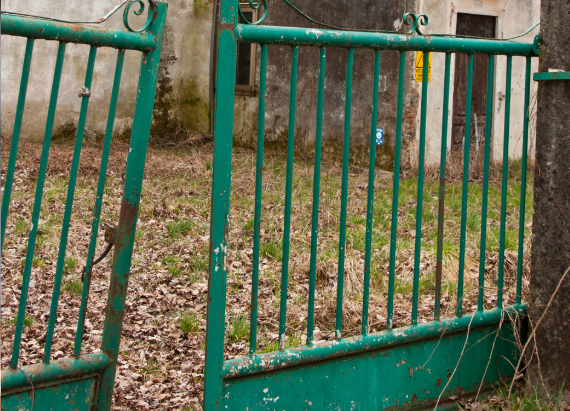
Iron gates are built for durability, but over time, they can become misaligned or start sagging due to natural wear and tear, environmental factors, or structural issues. A misaligned gate not only affects functionality—making it difficult to open and close properly—but can also cause excessive strain on hinges and automatic gate systems. Addressing the problem early can prevent further damage and costly repairs.
Causes of Misalignment
Several factors can lead to a sagging or misaligned iron gate:
- Loose or Damaged Hinges
Hinges bear the weight of the gate and facilitate smooth movement. Over time, screws may loosen, hinges may rust, or mounting brackets may weaken, causing the gate to shift out of alignment. - Soil Shifting and Post Movement
Changes in soil conditions due to erosion, moisture, or seasonal temperature shifts can cause gate posts to lean or tilt. This movement results in an uneven gate that may drag on the ground or fail to latch properly. - Excessive Gate Weight
If the gate is particularly heavy or has been modified with additional materials (such as decorative ironwork or security reinforcements), the added weight can cause it to sag over time, especially if the hinges and posts are not properly reinforced.
How to Fix a Misaligned Gate
If your iron gate is leaning, sagging, or not closing correctly, follow these steps to restore proper alignment:
- Inspect and Tighten Hinges
- Examine the hinges for signs of wear, rust, or loose screws.
- Tighten any loose screws or bolts using a wrench or screwdriver.
- If the hinges are severely worn or damaged, replace them with heavy-duty hinges designed to support the gate’s weight.
- Adjust or Reinforce Gate Posts
- Use a level to check if the gate posts are tilting or shifting.
- If the posts are loose, dig around the base and reinforce them with additional concrete. Allow the concrete to set properly before reattaching the gate.
- For minor adjustments, use shims or braces to realign the posts and maintain stability.
- Install an Adjustable Hinge or Brace
- If sagging continues, installing an adjustable hinge can help compensate for alignment issues and restore the gate’s proper positioning.
- A diagonal tension brace (installed from the lower hinge side to the upper opposite side of the gate) can provide additional support, especially for large or heavy gates.
- Regular Maintenance to Prevent Future Misalignment
- Periodically inspect and tighten hinges and mounting brackets.
- Keep gate posts stable by ensuring proper drainage around their base to minimize soil erosion.
- Avoid excessive force when opening or closing the gate to reduce unnecessary stress on hinges and posts.
If you’re unsure how to fix the alignment, seeking expert swing gate repair in Walnut Creek, CA can help ensure your gate is restored efficiently.
3. Automatic Iron Gate Not Opening or Closing Properly
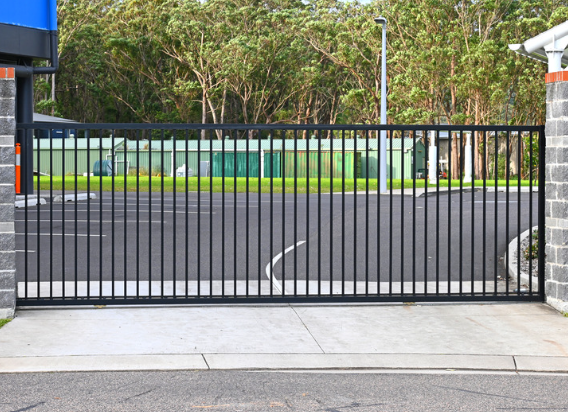
Automated iron gates offer convenience and security, but like any mechanical or electrical system, they can occasionally malfunction. When your automatic gate fails to open or close properly, it can be frustrating and even pose a security risk. Identifying the root cause and addressing the issue promptly can restore smooth operation and prevent further damage.
Common Causes
Several factors can contribute to an automatic gate not functioning correctly:
- Power Supply Disruption
- A power outage, disconnected wiring, or a tripped circuit breaker can prevent the gate from receiving the necessary electricity to operate.
- Malfunctioning Remote Control or Keypad
- If the remote control isn’t working, the issue could be drained batteries, a deprogrammed remote, or interference from other electronic devices.
- Sensor Obstruction or Misalignment
- Dirt, leaves, or debris blocking the safety sensors can interfere with the gate’s ability to detect obstacles, causing it to remain open or fail to close.
- Motor Failure or Wear and Tear
- The motor that powers the gate can wear out over time due to heavy usage, weather exposure, or lack of maintenance. If the motor stops working, the gate may struggle to move or become stuck in one position.
How to Fix an Automatic Iron Gate
If your automatic iron gate isn’t opening or closing properly, follow these troubleshooting steps to identify and resolve the problem:
- Check the Power Supply
- Verify that the gate’s power source is active. If the gate is hardwired, check the circuit breaker to ensure it hasn’t tripped.
- For solar-powered gates, ensure the solar panel is receiving sufficient sunlight and isn’t obstructed by dirt or debris.
- If your gate operates on a backup battery system, make sure the battery is charged and functioning properly.
- Inspect the Remote Control or Keypad
- If using a remote control, replace the batteries and test if the issue is resolved.
- Try reprogramming the remote or using a backup remote to see if the signal is being received.
- If you’re using a keypad entry system, ensure the code is entered correctly and check for any stuck buttons or wiring issues.
- Clean and Align the Sensors
- Automatic gates use sensors to detect obstacles and prevent accidents. If the sensors are dirty or misaligned, the gate may refuse to close.
- Wipe the sensors with a soft cloth to remove dirt, spider webs, or dust.
- Check that the sensors are properly aligned and not obstructed by nearby objects such as plants or vehicles.
- Examine the Motor for Issues
- Listen for unusual noises when the gate attempts to open or close. Grinding or clicking sounds could indicate motor strain or internal component failure.
- Inspect the motor casing for signs of wear, rust, or overheating.
- If the motor is old or damaged, it may need professional repair or replacement.
- Lubricate Moving Parts
- Hinges, rollers, and chains can become stiff over time due to exposure to weather conditions. Apply a suitable lubricant to ensure smooth movement and reduce strain on the motor.
For persistent issues, hiring a specialist in swing gate repair in Walnut Creek, CA, is recommended to diagnose and fix the problem efficiently.
4. Stiff or Noisy Hinges
A gate with stiff or squeaky hinges can be frustrating to operate, producing annoying noises and making it harder to open or close smoothly. Ignoring this issue can lead to increased wear and tear on the gate’s structure, potentially causing long-term damage. Addressing the problem early by identifying the cause and applying the right fix can help maintain the functionality and longevity of your iron gate.
Causes of Stiff Hinges
Several factors can contribute to gate hinges becoming stiff or noisy over time:
- Dirt and Debris Accumulation
- Dust, leaves, and grime can build up inside the hinge mechanism, leading to resistance and squeaking when the gate moves.
- Inadequate Lubrication
- Hinges require regular lubrication to move smoothly. Without it, friction increases, making the hinges stiff and noisy.
- Rusted or Worn-Out Hinges
- Exposure to moisture, humidity, and harsh weather conditions can cause hinges to rust, corrode, or weaken over time. Severe rusting may even lead to hinge failure.
How to Fix Stiff Hinges
If your iron gate’s hinges are stiff, squeaky, or difficult to operate, follow these steps to restore smooth movement:
- Clean the Hinges
- Inspect the hinges for dirt, rust, or debris buildup.
- Use a wire brush or an old toothbrush to scrub away dirt and rust from the hinge area.
- For stubborn rust, apply a rust remover or soak the hinges in a vinegar solution to loosen corrosion before scrubbing.
- Apply Lubricant
- Once the hinges are clean, apply a high-quality lubricant such as WD-40, lithium grease, or graphite lubricant to the moving parts.
- Open and close the gate several times to allow the lubricant to distribute evenly inside the hinge mechanism.
- Wipe away any excess lubricant to prevent dirt from sticking to the hinge.
- Replace Hinges if Necessary
- If the hinges are severely rusted, damaged, or broken, replacing them is the best long-term solution.
- Choose heavy-duty, rust-resistant hinges, especially if your gate is exposed to rain or humidity.
- If you replace the hinges, ensure they are properly aligned to prevent future alignment issues.
Preventative Maintenance for Iron Gates in Walnut Creek, CA
Iron gates in Walnut Creek, CA, are durable and add an elegant touch to any property, but they can become prone to rust, misalignment, and mechanical issues without proper upkeep. Implementing a regular maintenance routine is essential to extend your gate’s lifespan and avoid frequent repairs. Here are some key steps to ensure your iron gate remains in excellent condition:
To prevent frequent repairs, implementing a regular maintenance routine is crucial. Here’s what you should do:
- Regular Cleaning
Dirt, dust, and debris can accumulate on the surface of the gate, leading to corrosion and wear over time. Use a mild detergent and water to clean the gate periodically, rinsing it thoroughly and drying it with a soft cloth to prevent moisture-related damage.
- Rust Inspection and Prevention
Rust is one of the biggest threats to iron gates. Examine the surface regularly for signs of rust or peeling paint. If rust spots are found, gently sand them away and apply a rust-inhibiting primer before repainting the affected areas. Repainting the gate annually not only improves its appearance but also provides a protective barrier against the elements.
- Lubrication of Moving Parts
Hinges, locks, and other moving components should be lubricated every few months to prevent squeaking and stiffness. Use a high-quality lubricant, such as a silicone-based spray or grease, to ensure smooth operation and to prevent unnecessary strain on the gate’s structure.
- Checking Alignment and Structural Integrity
Over time, iron gates can shift out of alignment due to ground movement, weather conditions, or frequent use. Inspect the alignment of the gate by opening and closing it, ensuring it moves freely without scraping or sticking. If needed, make small adjustments to the hinges or support structure to maintain proper balance.
- Testing Automatic Gate Systems
If your gate is equipped with an automatic opening system, periodic testing is crucial to ensure it operates correctly. Check sensors, remote controls, and safety features, making sure the motor and mechanical components function smoothly. If you notice delays, unusual noises, or any malfunctions, consider scheduling professional servicing.
By following these preventative maintenance steps, you can keep your iron gate in optimal condition, minimizing the need for costly repairs and ensuring its longevity for years.
Frequently Asked Questions (FAQs)
1. What is the lifespan of an iron gate?
A well-maintained iron gate can last 50 years or more, depending on factors like weather exposure, quality of materials, and maintenance.
2. How do you maintain iron gates?
Regular maintenance includes:
- Cleaning the gate with soapy water and a brush to remove dirt and debris.
- Inspecting for rust and addressing it immediately.
- Applying a rust-resistant primer and paint to protect against corrosion.
- Lubricating hinges and locks for smooth operation.
3. How is an iron gate prevented from rusting?
To prevent rust:
- Apply a rust-inhibiting primer and weather-resistant paint.
- Regularly clean and inspect for early signs of corrosion.
- Use wax or protective sealants for extra protection in humid or coastal environments.
4. Why is my wrought iron gate not closing properly?
A wrought iron gate may not close properly due to:
- Misalignment from ground shifting or improper installation.
- Hinge wear or rust buildup causing stiffness.
- Obstructions like dirt or debris in the latch mechanism.
- Sagging due to heavy weight and weak hinges.
5. How do you adjust an iron gate?
- Tighten or replace hinges if they are loose or worn.
- Adjust the gate posts by reinforcing or repositioning them if they have shifted.
- Use a gate alignment kit to realign and balance the gate.
- Trim or grind excess metal if the gate is rubbing against the ground.
Conclusion
Maintaining and repairing your iron gate ensures that it remains functional and visually appealing for years. Whether dealing with rust, alignment issues, or an automatic gate malfunction, timely action can prevent further damage and costly repairs. DIY solutions work for minor issues, but professional expertise is necessary for more complex problems.
If you’re in need of expert iron gate repair in Walnut Creek, CA, Rolling Gates is your go-to service provider. Our team specializes in repairing, maintaining, and installing iron gates to keep your property secure and stylish. Contact us today for professional gate repair services.
End Note
Rolling Gates in Walnut Creek, CA, is a trusted name in gate repair and automation services. With over seven years of experience and hundreds of satisfied customers, we provide top-quality solutions for all types of gates. Whether you need gate repair, automated gate services, or regular maintenance, our expert team is here to help.
Serving clients throughout Walnut Creek, CA, and beyond, we take pride in our excellent craftsmanship and reliable customer service. Check out our service areas to see if we cover your location. Visit our FAQ page for answers to common electric gate issues, browse our gallery for past projects, or contact us today for a consultation.

